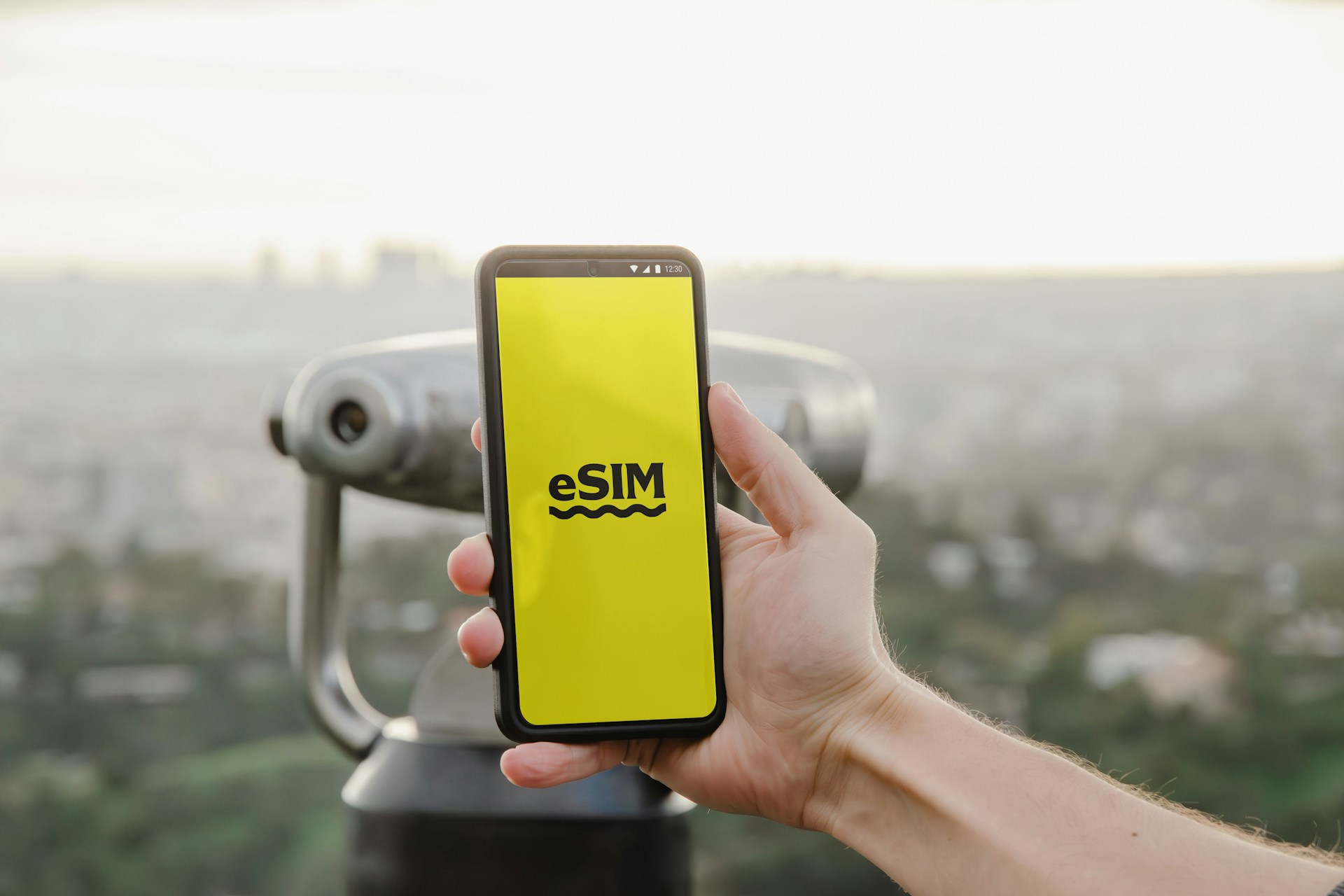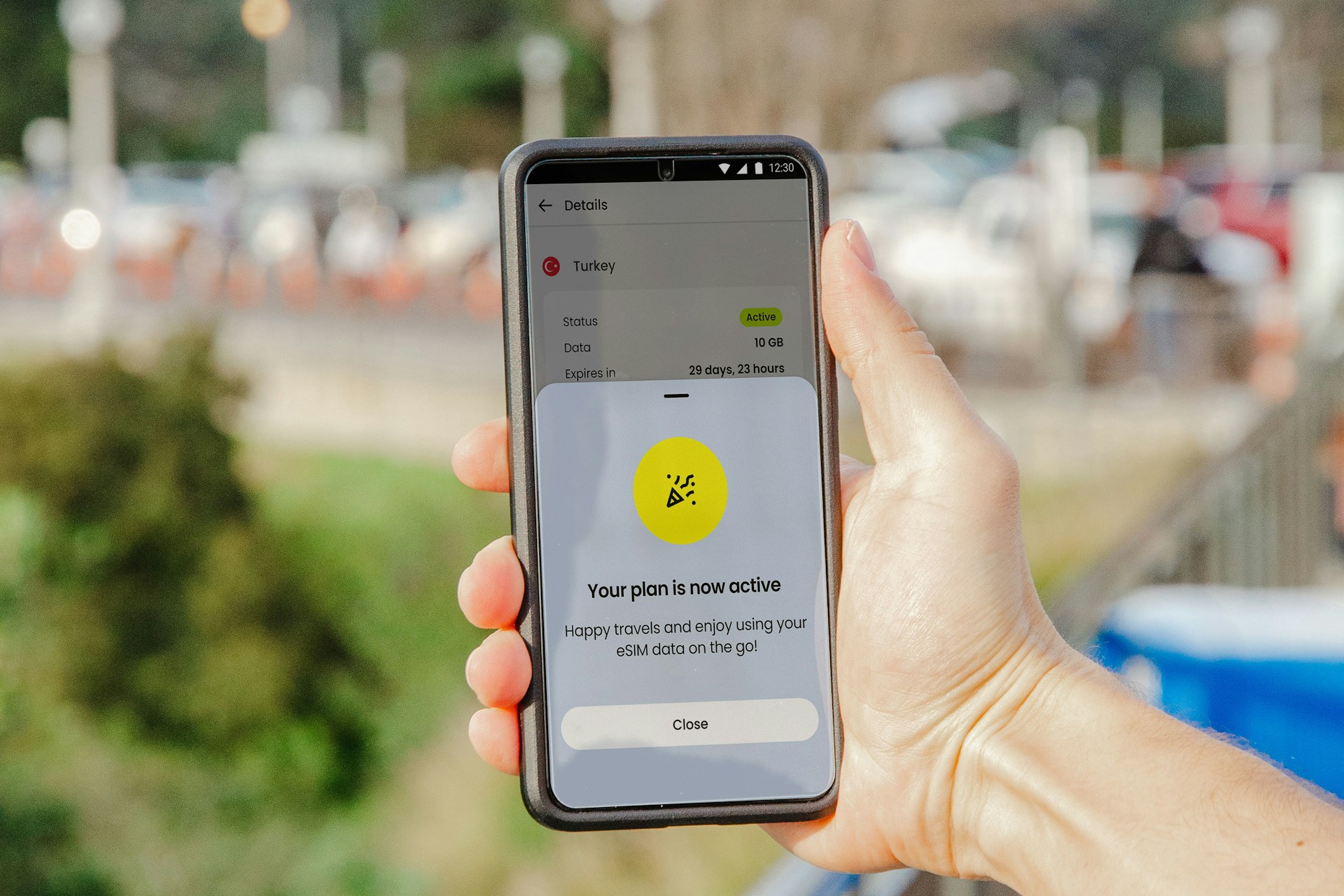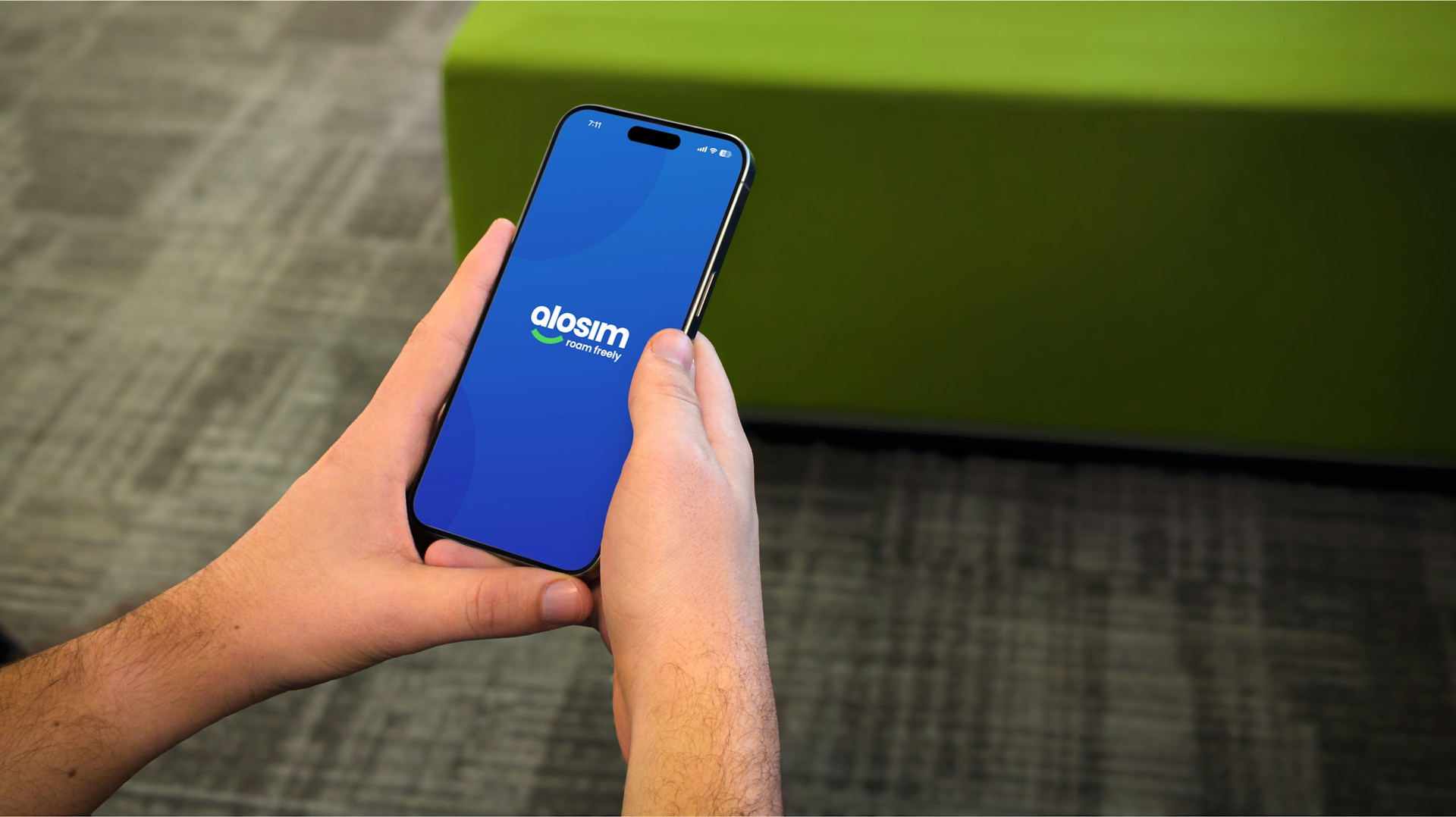
Alright, globetrotters, let’s talk REAL travel prep! Passport? Check. Killer playlist for the plane? Check. An insatiable urge to document every single amazing moment for the ‘gram? Double check! But wait… what about staying connected without your phone bill having a total meltdown the second you land?
If you’ve ever fumbled with tiny SIM card trays in a jet-lagged haze or paid more for roaming than for your fancy holiday cocktails, then buckle up! We’re diving into the world of eSIMs. But what is an eSIM? Well, it is the nifty little tech that might just be your new travel bestie. Are they all hype, or the holy grail of hassle-free data abroad? Let’s find out!
What IS an eSIM?
Think of an eSIM (Embedded Subscriber Identity Module) as a digital SIM card. Instead of a physical chip you pop into your phone, the eSIM is a small chip already built into your device. You activate it by downloading a “profile” from a mobile operator.
This means:
- No more tiny, losable plastic cards!
- No more hunting for a SIM card vendor upon arrival.
- The ability to have multiple phone plans (e.g., your home plan and a travel plan) on one device.
How Do eSIMs Work? It’s Simpler Than You Think!
Getting an eSIM up and running is usually a breeze:
- Check Compatibility: First, ensure your phone is eSIM-compatible. Most newer smartphones (iPhone XS/XR and later, Google Pixel 3 and later, many Samsung Galaxy S20 and later models, etc.) support eSIMs. A quick Google search of “[your phone model] eSIM support” will tell you.
- Choose Your Provider & Plan: There are tons of eSIM providers out there (more on them below!). You’ll typically browse their website or app, select the country or region you’re visiting, choose a data package (e.g., 5GB for 30 days), and pay.
- Receive Activation Info: After purchase, you’ll usually get a QR code via email, or instructions to activate directly through the provider’s app.
- Activate (Usually Before You Go or On Arrival Wi-Fi):
- Go to your phone’s settings (Cellular/Mobile Data > Add Cellular Plan/Add eSIM).
- Scan the QR code provided by your eSIM company.
- Follow the on-screen prompts to label your eSIM (e.g., “Travel Data”) and choose how you want to use it (e.g., data only, or for calls and texts if supported).
- You’re Connected! Once you land in your destination (or if you activated it at home just before leaving), your phone should automatically connect to the local network using your eSIM data.
Pro Tip: It’s often easiest to set up your eSIM before you leave home while you have reliable Wi-Fi, then activate it upon arrival.
The Big Question: eSIM vs. Roaming – The Cost Showdown!
This is where eSIMs really shine for most travelers. Let’s break it down with a hypothetical 1-week trip to Italy:
Scenario 1: International Roaming (Your Home Carrier)
- Many carriers charge around $10 – $15 PER DAY for an international roaming pass.
- For 7 days: 7 x $10= $70 (minimum)**.
- This often comes with limited high-speed data before throttling.
Scenario 2: Using an eSIM
- You could find an eSIM plan for Italy offering 5GB of data valid for 30 days for around $15 – $25.
- Total cost for 7 days (with plenty of data left over): $15 – $25.
The Verdict:
eSIM winning by a mile!
a potential saving of $55 or more! For longer trips or multiple countries, the savings become even more significant.
But How Much Data Do I Need Abroad?
This is the million-dollar question! It depends heavily on your usage. Here are some rough estimates to help you gauge:
- Google Maps (Navigation): 5-15MB per hour (downloading offline maps beforehand saves a ton!)
- Web Browsing: 50-100MB per hour (text-heavy sites less, image/video-heavy sites more)
- Email (checking/light sending): 1-5MB per session
- Instagram Post (1 photo): 2-5MB
- Instagram Story (15-sec video): 5-15MB
- Streaming Music (Spotify, Apple Music): 40-150MB per hour (depending on quality)
- FaceTime/Video Call (Standard Quality): 3-5MB per minute (so ~180-300MB per hour)
- Watching a YouTube Video (Standard Definition): 200-350MB per hour
General Guide for a Week of Travel
- Light User (maps, occasional browsing, social media check-ins): 1-3GB might be enough.
- Medium User (regular maps, social media posting, some music streaming, occasional video calls): 3-5GB is a good target.
- Heavy User (frequent video calls, streaming videos, heavy social media use, hotspotting): 5GB+ or even 10GB+. Some providers offer “unlimited” plans (though these often have fair use policies and might throttle speed after a certain point).
Our advice? Start with a moderate plan (e.g., 3GB or 5GB). Many eSIM providers let you easily top-up if you run low.
Popular eSIM Providers to Check Out
The market is booming, but here are a few well-regarded names:
- Airalo: One of the most popular. Offers local, regional, and global eSIMs. User-friendly app and wide coverage.
- Holafly: Known for offering unlimited data plans for specific countries or regions (though check for speed throttling after a certain usage). Often good for longer trips where you don’t want to worry about data caps.
- Nomad: Another strong contender with a good app and competitive pricing for various destinations.
- GigSky: A long-standing player, often praised for reliable service, particularly in North America and Europe.
- Ubigi: Good for frequent travelers, offers monthly and annual plans, and has partnerships with some car manufacturers for in-car connectivity.
Don’t forget to also check:
- Your phone manufacturer: Apple and Google sometimes have their own recommendations or partnerships.
- Your home carrier: Some now offer more competitive international eSIM options, though usually still pricier than dedicated travel eSIM providers.
So, Are eSIMs REALLY Worth It?
In our opinion, for most modern travelers with compatible phones: YES, absolutely!
Here’s why:
- ✅ Cost-Effective: Significantly cheaper than most international roaming plans.
- ✅ Convenience: Activate from anywhere, no physical SIM swaps.
- ✅ Flexibility: Keep your home number active for calls/texts (if your phone supports dual SIM functionality with eSIM) while using the eSIM for cheaper data.
- ✅ Choice: Easily switch between providers or plans to find the best deal for your destination.
- ✅ Instant Gratification: Get connected almost immediately upon arrival.
Potential Downsides (Minor, in my experience):
- Phone Compatibility: Your phone must support eSIMs.
- Initial Learning Curve: The first time might feel a tiny bit technical, but it’s straightforward once you do it.
- No Physical SIM to Swap: If your phone breaks and you need to quickly use an old backup phone that doesn’t support eSIM, you’re stuck (though this is an edge case).
Final Tips for eSIM Success
- Confirm Compatibility: Double-check your phone supports eSIMs before purchasing a plan.
- Buy Before You Fly: Purchase your eSIM plan a day or two before your trip.
- Use Wi-Fi for Setup: While some allow activation over cellular, it’s often smoother to scan the QR code and do the initial setup steps while on a stable Wi-Fi connection (e.g., at home or the airport lounge).
- Label Your Lines: Clearly label your primary SIM and your travel eSIM in your phone settings (e.g., “Home,” “Europe Data”) to avoid confusion.
- Turn Off Data Roaming on Your Home SIM: Make sure data roaming is toggled OFF for your primary physical SIM to avoid accidental charges. Set your eSIM as the default for mobile data.
So, ditch the SIM card stress and give eSIMs a try on your next adventure! You’ll likely save money, enjoy hassle-free connectivity, and wonder how you ever traveled without one.
And rememeber, if youa re looking for even MORE savings during your up-coming holiday, remember to pre-book your airport parking through OneStopParking for unreal deals!
Happy (and connected) travels!

